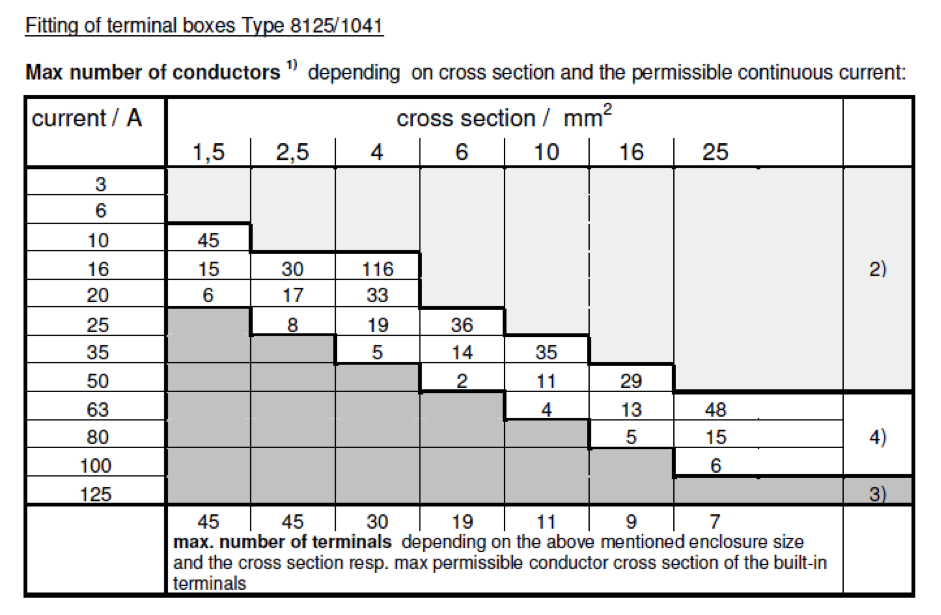The Only Guide for Roar Solutions
The Only Guide for Roar Solutions
Blog Article
The smart Trick of Roar Solutions That Nobody is Discussing
Table of ContentsNot known Incorrect Statements About Roar Solutions Some Known Incorrect Statements About Roar Solutions Not known Facts About Roar Solutions
In order to secure setups from a possible explosion a method of analysing and identifying a possibly harmful location is needed. The purpose of this is to make certain the appropriate choice and installment of devices to eventually prevent a surge and to ensure safety and security of life.
(https://www.twitch.tv/roarsolutions/about)
No tools must be set up where the surface temperature of the devices is higher than the ignition temperature of the offered threat. Below are some common dirt dangerous and their minimum ignition temperature. Coal Dust 380C 225C Polythene 420C (melts) Methyl Cellulose 420C 320C Starch 460C 435C Flour 490C 340C Sugar 490C 460C Grain Dust 510C 300C Phenolic Material 530C > 450C Aluminium 590C > 450C PVC 700C > 450C Soot 810C 570C The likelihood of the risk existing in a concentration high sufficient to create an ignition will differ from place to area.
In order to identify this threat an installment is split into locations of threat depending upon the quantity of time the dangerous exists. These areas are described as Zones. For gases and vapours and dusts and fibres there are 3 zones. Area 0 Zone 20 A dangerous atmosphere is extremely likely to be existing and may be existing for extended periods of time (> 1000 hours per year) or also continuously Area 1 Area 21 A harmful atmosphere is possible but not likely to be existing for lengthy durations of time (> 10 450 C [842 F] A category of T6 means the minimum ignition temperature is > 85 C [185 F] Dangerous location electric equipment perhaps made for usage in greater ambient temperatures. This would indicated on the rating plate e.g. EExe II C T3 Ta + 60C( This indicates at 60C ambient T3 will not be exceeded) T1 T1, T2, T3, T4, T5, T6 T2 T2, T3, T4, T5, T6 T3 T3, T4, T5, T6 T4 T4, T5, T6 T5 T5, T6 T6 T6 A T Class ranking of T1 indicates the maximum surface temperature created by the instrument at 40 C is 450 C. Assuming the associated T Course and Temperature level ranking for the equipment are appropriate for the area, you can constantly use a tool with an extra strict Division ranking than required for the area. There isn't a clear solution to this inquiry. It really does rely on the type of devices and what fixings require to be executed. Devices with specific examination treatments that can not be performed in the field in order to achieve/maintain 3rd party score. Need to come back to the factory if it is before the tools's service. Field Repair Work By Authorised Employee: Complicated screening may not be required nevertheless details treatments might require to be followed in order for the devices to preserve its 3rd party ranking. Authorised personnel should be employed to execute the work properly Repair service should be a like for like replacement. New part should be thought about as a direct replacement calling for no special testing of the equipment after the repair is total. Each piece of equipment with an unsafe ranking should be examined independently. These are described at a high degree listed below, but also for even more detailed details, please refer straight to the standards.
Roar Solutions for Beginners
The tools register is a detailed data source of equipment documents that includes a minimum set of fields to recognize each product's place, technical parameters, Ex lover classification, age, and environmental data. The ratio of Detailed to Shut inspections will certainly be figured out by the Equipment Threat, which is analyzed based on ignition risk (the chance of a resource of ignition versus the probability of a combustible environment )and the unsafe area category
( Zone 0, 1, or 2). Executing a durable Risk-Based Examination( RBI )technique is essential for making certain compliance and security in taking care of Electric Equipment in Hazardous Locations( EEHA).
Roar Solutions for Beginners

In regards to explosive risk, an unsafe area is an why not try these out environment in which an eruptive atmosphere is existing (or may be expected to be present) in amounts that call for unique precautions for the building, installment and usage of tools. eeha training. In this article we explore the obstacles faced in the office, the threat control procedures, and the needed competencies to function safely
It is a repercussion of contemporary life that we produce, save or take care of a variety of gases or liquids that are considered flammable, and a series of dirts that are deemed flammable. These substances can, in particular problems, create explosive ambiences and these can have significant and terrible consequences. Many of us know with the fire triangular get rid of any among the three components and the fire can not happen, yet what does this mean in the context of dangerous areas? When damaging this down into its most basic terms it is basically: a mix of a certain amount of launch or leak of a particular compound or material, blending with ambient oxygen, and the existence of a resource of ignition.
In a lot of instances, we can do little regarding the levels of oxygen in the air, however we can have significant impact on resources of ignition, for instance electrical devices. Hazardous areas are recorded on the dangerous area classification illustration and are recognized on-site by the triangular "EX LOVER" sign. Right here, amongst other vital information, zones are divided right into 3 types depending upon the hazard, the probability and duration that an eruptive environment will certainly exist; Zone 0 or 20 is considered one of the most dangerous and Zone 2 or 22 is regarded the least.
Report this page